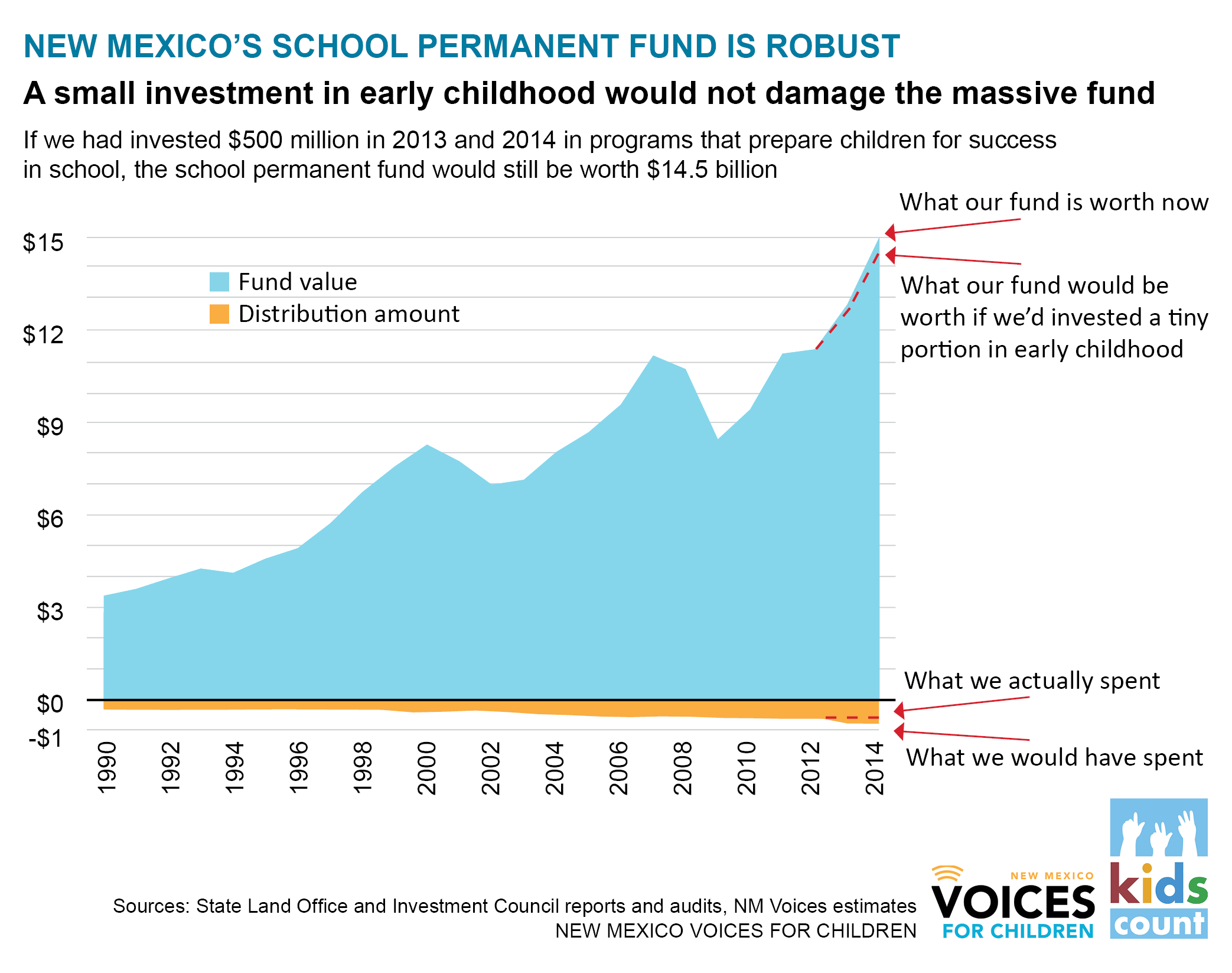by Bill Jordan
August 20, 2015
Thousands of adorable and inquisitive youngsters are trotting off to school for the first time this month. From all around the state these wide-eyed kiddos are beginning their school adventures. In honor of this new class, we thought we’d look back at how New Mexico prepared them for school, and look forward to how babies born this year will fare in their preschool years.
In 2010, the year this new class was born, 30,733 of New Mexico’s children were enrolled in the state’s early childhood programs that help children prepare for school: home visiting, pre-kindergarten, and child care assistance. If you think that sounds like a lot, it’s actually only about a quarter of all our preschoolers. Think that’s bad? It gets worse.
Despite all the legislative activity around early childhood services, only 28,701 children – or about 2,000 fewer – are benefiting from these same early learning programs this year. Enrollment has increased for both home visiting and pre-K – and that’s great – but nearly 8,000 children have been dropped from the child care assistance roles. That’s especially troubling because that’s the program that serves children for most of their preschool years. While home visiting focuses on the first year or two of life, and pre-K serves only four-year-olds, child care assistance serves kids throughout their preschool years.
An overall decrease in enrollment in early childhood programs is deeply troubling. These early childhood programs don’t just help prepare kids for success in school – they also help keep kids safe. Home visiting lowers the incidence of child abuse. More babies and toddlers are receiving it, the program still reaches fewer than 4 percent of the state’s children under the age of two. Child care assistance helps families place their children in quality, licensed programs where they will be safe. Without child care assistance, low-income parents have to cobble together a system of care from their friends, extended families, neighbors, and other low-cost or no-cost situations.
As it happens, 2010 was also the year that the idea for a new funding mechanism for these programs was born. Frustrated by the slow pace of legislative action to expand these programs, New Mexico Voices for Children suggested using a tiny portion of the state’s Land Grant Permanent Fund. New Mexico has the nation’s second largest such fund, which was a whopping $11 billion in 2010. We thought it was shameful that our indicators of child well-being were dropping while this massive education fund was growing – it’s nearly $15 billion today. Instead of investing in our children we were investing this big pot of money in Wall Street. Spending just 1.5 percent of the $15 billion fund in our youngest and most vulnerable children seemed like a win-win, especially since Nobel Prize-winning economists have determined that investing in high-quality early childhood programs provides a better return on investment than Wall Street!
So in the 2011 legislative session, with a broad coalition of other advocates, we educated the Legislature about the benefits of putting the issue before the voters. As you probably recall, that proposal not only died in 2011, but has been blocked for five straight legislative sessions.
Those opposed to the move claimed they were afraid it would “drain” the fund. But it wouldn’t. If the Legislature had acted in 2011 to put the issue on the 2012 ballot and the voters had passed it, we would have had nearly $500 million more to invest in early care and education since then. Well over half of our babies and preschoolers would have access to high-quality care and learning services and their futures would look a lot brighter. The permanent fund would still have grown from $11 billion in 2011 to $14.5 billion today. Instead, we reinvested that $500 million on Wall Street, and today, fewer of our children have access to early care and education than did back in 2010.
The take-away is this: If we pass the permanent fund initiative, the fund continues to grow at a good rate, but we also invest much more in our children, and that pays an even more valuable and longer-lasting dividend.
So only a few of those babies born in 2010 are entering school this year with the best preparation possible. And in 2020, when the children born this year are starting school, even fewer will have had access to these services unless we make a much bigger commitment to them over the next few years.
To be fair, the Legislature has increased funding for these programs every year since 2010 (except for child care assistance, which was cut this year), and the quality of some programs has also been increased. But these incremental increases are just baby steps, and lawmakers are kidding themselves and doing a great disservice to our state’s children if they think this is slow-going approach is sufficient. It is not. Babies cannot put their childhood on hold, and every year the Legislature fails to make a sufficient investment, is another year our preschoolers lose out on what we know would make all the difference in their success. We’ve already let five years go by. We can’t afford to lose five more.
Bill Jordan, MA, is Senior Policy Advisor/Governmental Relations for NM Voices for Children.

